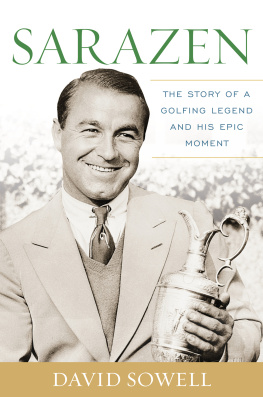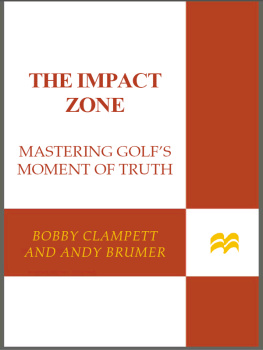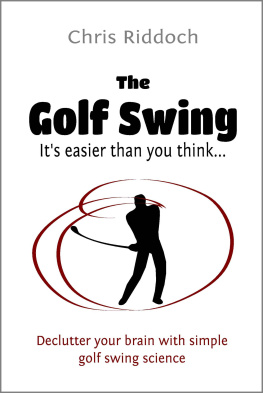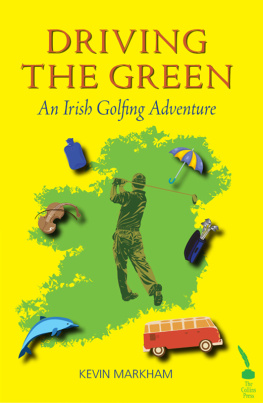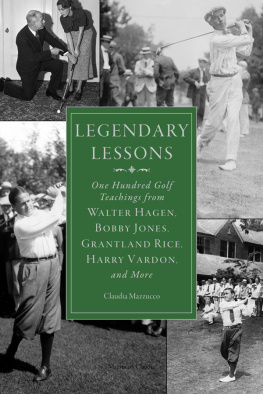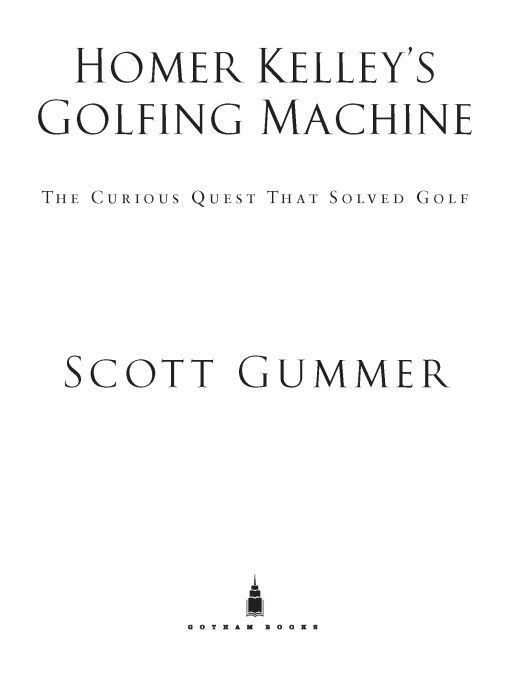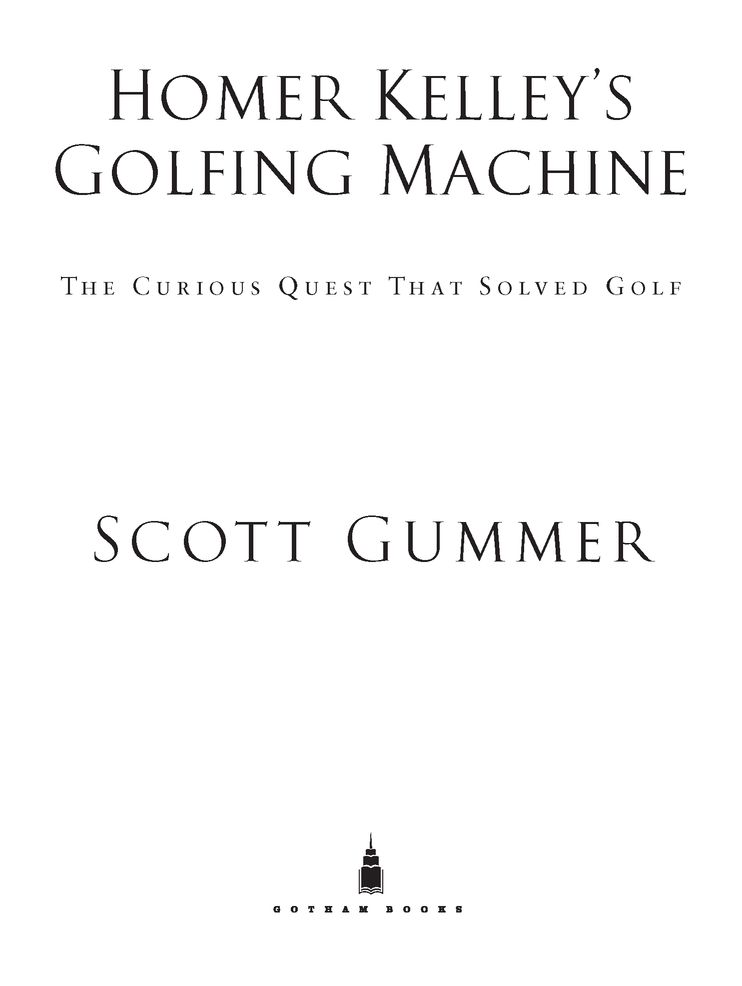Table of Contents
ALSO BY SCOTT GUMMER
THE SEVENTH AT ST. ANDREWS
How Scotsman David McLay Kidd and His Ragtag Band
Built the First New Course on Golfs Holy Soil
in Nearly a Century
for my father and mother
FOREWORD
STEVE ELKINGTON
Ever since I started playing golf as a boy, I have been fascinated by the nuts and bolts of the swing. Analytical by nature, I always sensed that the explanation for how to create a mechanically sound stroke could be found in math and science.
I have been fortunate to work with wonderful teachers, including Alex Mercer in Australia, the late Claude Harmon, and my mentor, Jackie Burke. Each shared with me their beliefs on what the golf swing should look and feel like, and I enjoyed great success as a result of their teachings, my professional career highlighted by winning a major, the 1995 PGA Championship, seventeen victories worldwide, and ten on the PGA Tour.
A little over a decade ago, not long after I won the Players Championship for a second time, a friend who was well aware of my interest in the inner workings of the golf swing suggested I visit Ben Doyle. Ben had worked with a long list of tour players and top teachers, so I went to Carmel Valley and spent a few days at the Quail Lodge resort with Ben.
The first time I saw Ben hit a ball, I knew instantly that his swing possessed a mathematical advantage.
I have always had a keen eye for golf swings. I can instinctively pinpoint where golfers are correct and where they are compensating, and I knew Ben was onto something. All the answers, he said, were in the book, and he handed me a copy of The Golfing Machine by Homer Kelley.
My reaction, like most, was initial intimidation, yet my desire to truly understand the golf swing fueled my commitment to devote the time and energy required to work through the book. In it, Homer Kelley cataloged all useable components and explained all available variations for swings that are considered orthodox, like Jackie Burkes, Tiger Woodss, and mine, as well as those considered unorthodox, like Arnold Palmers, Lee Trevinos, and Jim Furyks. Each can be mathematically correctwhen understood.
The Golfing Machine is not a traditional instructional text that endeavors to teach a golf swing, but rather a manual that explains every possible combination of every possible golf swing. That fundamental difference, for me, makes The Golfing Machine the Holy Grail.
Like Ben says, either youre lawful or youre awful.
Over the course of the dozen years that I have been working with Ben, it has become something of a hobby of mine to test every assertion Homer Kelley makes in The Golfing Machine. At the highest level of competition and under the most demanding of conditions, I have found everything in the book to be true.
I traveled to Homers studio in Seattle and visited with his widow, Sally. Those experiences only deepened my profound awe and respect for how any one man could have started this project and completed it to the depth that Homer did. I am amazedby the book and the truths I continue to discover in it, but also by those who debunk it. Come show me where its wrong. Thats what Ben has always said, and Ben is correct. Just show me where its wrong.
In the forty years since Homer Kelley first published The Golfing Machine, everything has become measurable. This is especially true in sport. I long to see one of those sports-science television shows devote a program to analyzing a golf swing that possesses maximum mathematical efficiency, because the dissected result would be twenty-four matched components and associated variations right out of The Golfing Machine.
The advances Homer Kelley foreshadowed in the books subtitle, Geometric Golf: The Computer Age Approach to Golfing Perfection, have cluttered lesson tees with all manner of high-tech gizmos and gadgets and turned golf instruction into a billion-dollar industrywhile at the same time leaving more golfers more confused and discouraged. It need not be that way, for the book unlocks what every golfer wants and needs: a little definitive information.
Thanks to Homer Kelley, the golf swing is no longer an enigma. Thanks to The Golfing Machine, that is precisely what I have discovered.
PREFACE
My greatest joy as a writer comes from telling stories about everyday people whose worthwhile lives deserve to be shared. Homer Kelley is just such a person.
What initially surprised and ultimately attracted me to Homers story is that so few people knew itmyself included. Having followed golf my whole life, written about the game for over a decade, and worked as senior writer with Golf magazine, I felt that I was fairly plugged in. Yet I knew absolutely nothing about Homer Kelley or The Golfing Machine until the day my agent, Scott Waxman, suggested that I share Homers story.
What a story it is. The first time he played golf Kelley shot 116. He did not play again for six months, and the next time he teed it up he carded a 77. Vexed by the inability of a parade of teaching professionals to explain why he did not play better the first time and/or why he played as well as he did the second, Kelley concluded that if he wanted the right answer he would have to find it himself.
Homer Kelley subsequently devoted forty-four years to four one-thousandths of a second. That is the impact interval in golf, a riddle Kelley spent his lifetime working to unravel so that pros like Bobby Clampett and Steve Elkington, teachers like Ben Doyle, and duffers like me might derive more enjoyment from the game.
Telling a story that spans a hundred years is not unlike what teaching professional Martin Hall says Kelley did for golf instruction: Homer pulled loose strings tight, he painted in the corners. I have endeavored to paint a fair picture, and my desire for sharing the untold and underappreciated story of Homer Kelley is best expressed by Kelleys own motivation for writing
The Golfing Machine:I just wanted to get it all written down.
If I didnt it might have been another seven hundred
years before someone did.
HOMER KELLEY
There is one thing stronger
than all the armies in the world:
and that is an idea
whose time has come.
VICTOR HUGO
pasted in the scrapbook of Homer Kelley
HOW HARD CAN IT BE?
The ball sat motionless on a peg in the grass. Behind it rested a polished block of persimmon wood, significantly larger in size and harder in composition than the ball. Jutting from the wood was a long, shiny, silver shaft of steel. Wrapped tightly around the grip at the top of the shaft were the strong hands of a thirty-one-year-old man. He took a practice swing. Then another. Weapon at the ready, target open wide, the ball was his for the crushing.
It would have been a different story had the ball been moving. It was not hurtling toward him at blinding speed. It was not camouflaged, made no evasive movements or attempts to elude. It was not curving or sinking or knuckling about. It just sat there, ready for takeoff.
He had no reason to fear repercussion. What he was about to do was not illegal; in fact, it was encouraged. Give it a ride, said one of the three men waiting and watching behind him. The ball was not fragile and would not shatter or explode. It bore no seams or stitches or other impediments to its trajectory. It was neither slippery nor spindly nor oblong nor heavy. It was, in fact, quite light and perfectly round. It did not teeter or totter. It just sat there on its perch, completely obediently. What are you waiting for? cracked another of the men.




